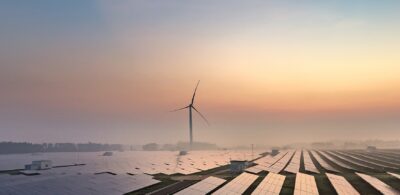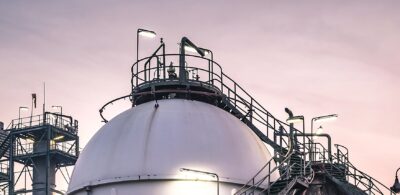Government signals hydrogen and energy storage investment a priority
29 September 2020
The Ministerial Reference Panel for the Commonwealth Department of Industry, Science, Energy and Resources (Panel) released the first Low Emissions Technology Statement on 22 September 2020 (the 2020 Technology Statement). The statement sends strong signals to project sponsors focused on bringing clean hydrogen and energy storage to market.
The 2020 Technology Statement provides an energy investment policy baseline for the next 12 months and contextualises the Commonwealth Government’s recent announcements regarding the gas sector and new $1.9 billion funding package for future energy technology.
What is the 2020 Technology Statement?
The 2020 Technology Statement is the release name of the Commonwealth Government’s foreshadowed Technology Investment Roadmap. In this instance, the Government has re-tooled the traditional ‘roadmap’ concept into a policy guideline which will be updated and tabled annually in Parliament.
Future Technology Statements will be updated by the new Technology Investment Advisory Council, a body which replaces the Panel and will consist of the Panel’s current members (Dr Alan Finkel, Alison Watkins, Ben Wilson, Drew Clarke, Grant King, Jo Evans and Shemara Wikramanayake) plus the chairpersons of the Australian Renewable Energy Agency (ARENA), the Clean Energy Finance Corporation (CEFC) and the Clean Energy Regulator (the CER).
What does the 2020 Technology Statement say?
The 2020 Technology Statement builds on the Commonwealth Government’s commitment to supporting new and emerging technologies which will result in lower emissions in Australia and support economic growth. The 2020 Technology Statement also cements the Government’s shift away from directly supporting and subsidising wind and solar projects, as it considers these markets to be mature and capable of operating without government intervention.
The 2020 Technology Statement’s primary aims are to:
- deliver affordable clean energy to consumers and industry;
- expand production and productivity in primary industry through lower emissions;
- expand onshore manufacturing of energy-intensive items;
- capture new export markets for low emissions commodities; and
- scale sequestration to a globally significant level.
Priority low emission technologies for government support
The 2020 Technology Statement focuses on five priority low emission technologies, which have been flagged as being of long-term strategic importance to Australia due to their anticipated impact. These technologies (in order of priority) are:
- hydrogen;
- energy storage;
- low carbon metals production (steel and aluminium);
- carbon capture and storage; and
- carbon soil sequestration.
In addition to the priorities, the 2020 Technology Statement includes ‘stretch’ goals. While the goals themselves are not new, their reiteration in the 2020 Technology Statement provides a tangible benchmark for government and the private sector to work towards.
The stretch goals are:
- delivering clean hydrogen under $2 per kilogram;
- stored electricity for grid firming at under $100 per MWh;
- low emissions steel for under $900 per tonne and low emissions aluminium for under $2,700 per tonne;
- CO2 compression, transport and storage for under $20 per tonne; and
- soil carbon measurements of under $3 per hectare per year.
Public-private investment
The 2020 Technology Statement aims to achieve its strategic goals by catalysing private sector investment and improving coordination between ARENA, the CEFC and CER to facilitate funding delivery.
A key element of the Government’s plan is its intention to leverage private investment to achieve its policy objectives. To this end, the 2020 Technology Statement foreshadows that for each dollar in funding the government invests in low emissions technologies, it will seek $3-$5 from the private sector (on average). Where this ratio is not being met, any affected technologies may be reprioritised in future Technology Statements.
Relevantly, when coupled with the expected $18 billion of funding by the Commonwealth, the Government is hopeful the public-private investment framework will result in up to $100 billion being invested in low emissions technologies between now and 2030.
Hydrogen a clear winner
The key element which underpins the 2020 Technology Statement’s main objectives is clean hydrogen.
While the 2020 Technology Statement does not provide new information regarding funding or regulatory changes, the clarity and cohesion of the policies it speaks to should provide project sponsors in the sector with confidence that the Commonwealth is committed to hydrogen.
For example, expressions of interest are to be sought for the creation of a regional hydrogen export hub from the private sector and state governments.[1] Funding will also be provided for research and development into hydrogen-related technologies and infrastructure and carbon compression research which aids in, amongst other things, hydrogen production as well as the stimulation of domestic hydrogen demand and opportunities.
Coupled with other recent policy initiatives, the 2020 Technology Statement is indicative of a cohesive policy focus to support the development of a clean hydrogen sector in Australia over the coming decade. Other policy initiatives include:
- the recent direction requiring the CEFC to allocate $300 million in funding for hydrogen technology development;
- the offshore wind regulatory framework which is under development; and
- the Energy Security Board’s current post-2025 market design project for the NEM.
Other significant announcements
The Commonwealth Government has also foreshadowed two investment-focused developments.
The first is the ‘Technology Investment Roadmap data portal’, which will be developed by the Government and is designed to provide data to the private sector and support investment decision-making.
The second is targeting and encouraging international collaboration to facilitate trade and investment and the development of global supply lines. With respect to hydrogen, we understand the focus will be on the Department of Industry, Science, Energy and Resources (DISER) producing a reputable certification and guarantee of origin scheme for Australia, as well as work required by other agencies in relation to updating hydrogen safety and the regulatory frameworks.
Devil is in the detail
As with all new policy announcements, the devil is in the detail. The 2020 Technology Statement reveals little in the way of detail as to how government agencies (such as DISER, ARENA, the CEFC and the CER) intend to translate the 2020 Technology Statement priorities into tangible actions and results, beyond existing initiatives and a new requirement for each agency to report to the responsible Minister (currently Angus Taylor) and the public on its progress towards facilitating the 2020 Technology Statement goals. We expect further clarity will be provided when the Commonwealth Budget is released.
In the meantime, project sponsors and other parties interested in hydrogen and energy storage should take confidence from the overarching policy and strategic aims outlined in the 2020 Technology Statement which builds upon other energy sector announcements over the past year, including the National Hydrogen Strategy and the King Review (changes relating to the Emissions Reduction Fund), to create a policy baseline. A baseline which is, ultimately, achieved through the private sector continuing to develop hydrogen and energy storage projects and the associated infrastructure in Australia (with the support of government policy and investment).
[1] The Roadmap’s wording indicates that the regional hydrogen export hub will be a single location. It is unclear at this stage how this will affect the development of, and support for, the proposed hubs already being mooted such as the Asia Renewable Energy Hub in Western Australia and the H2-Hub in Queensland).
Authors
Tags
This publication is introductory in nature. Its content is current at the date of publication. It does not constitute legal advice and should not be relied upon as such. You should always obtain legal advice based on your specific circumstances before taking any action relating to matters covered by this publication. Some information may have been obtained from external sources, and we cannot guarantee the accuracy or currency of any such information.






